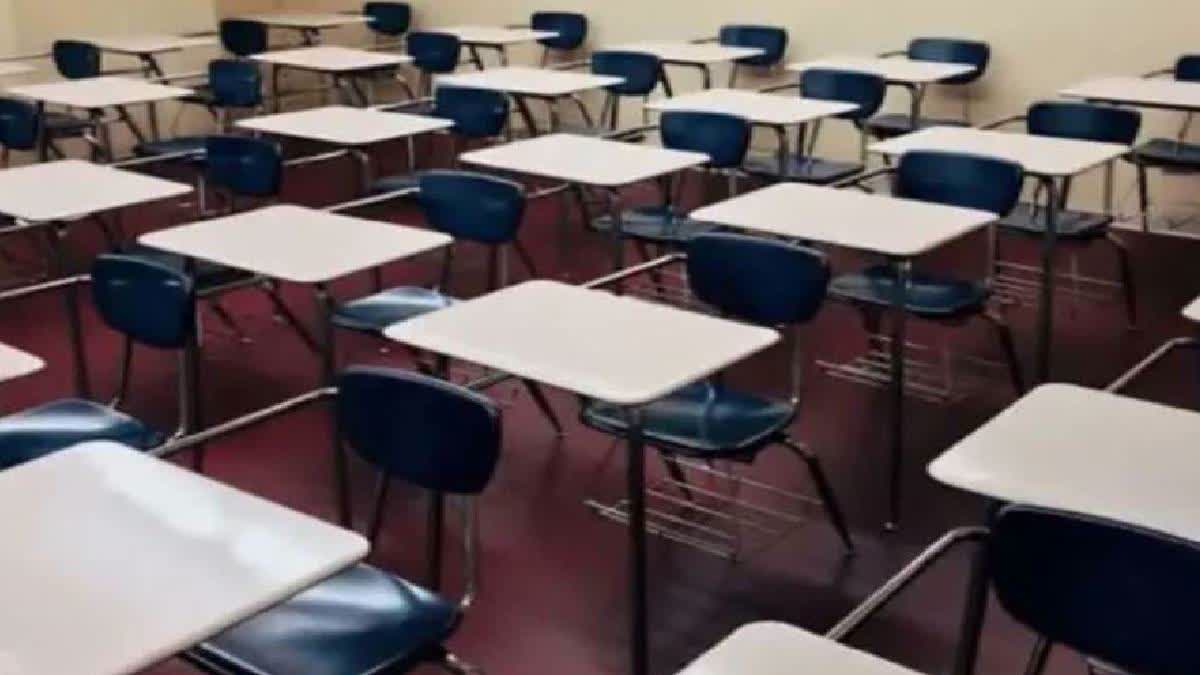New Delhi:The condition of government schools in most of the states remains deplorable while the private ones flourish. Though the Kothari Commission proposed a Common Education System, it could not be implemented as it faced opposition from certain sections of society. Even, an order issued by Uttar Pradesh High Court directing government officials to send their children to government schools was ignored.
A Gujarat government bureaucrat Dhaval Patel after visiting six primary schools in Chhota Udepur district in the tribal area made some serious observations. "These poor tribal children do not have any other source of education. It is my strong opinion we are doing an injustice to them by giving them this rotten education. We are ensuring that they continue doing labour work generation after generation and do not move forward in life. This is the height of moral decadence where we are cheating students and their parents who trust us blindly. Despite the required infrastructure and teachers, how can we get such a level of education is a puzzle for me. Children stay with us for eight years. If they still cannot add and subtract, it shows the lack of capability of teachers," he said.
He found several class 8 students could not add single digit numbers or read a word of Gujarati, reading it alphabet by alphabet. He also found mass copying to be a common phenomenon. Children without understanding the question in English had written the answer so all answers were the same. Obviously, the teachers had helped them, the IAS officer had remarked.
The story of government schools, except for a few states like Kerala, Tamil Nadu, Himachal Pradesh, Delhi and some states of the Northeast is probably the same across India. The quality of education in government schools has been deliberately ignored so that private schools can prosper. The policymakers and administrators of government schools have hatched this conspiracy. They are not affected by it because all of them send their children to private schools.
The current state of the education system in India reflects a mix of achievements and challenges as the country strives to provide quality education to all its citizens. With a vast and diverse population, India faces the dual task of ensuring access to education and improving its quality across different regions and socio-economic backgrounds.
While significant progress has been made in terms of enrolment rates and literacy, there are some persistent issues like uneven learning outcomes, gender disparity and the need for vocational skills development. A closer look helps us realise that the disparities arise not only due to inefficiencies in the system but also how the education system in India has been shaped over decades.
History too tells us the same. The traditional Hindu education system served the needs of Brahmin families, who were the highest caste in the social hierarchy. The Mughal education was also elitist. These pre-existing elitist tendencies were reinforced under British rule, which linked education to government service and colonial interests. The British education system also created a divide between English-medium and vernacular-medium schools, which persists to this day.
After independence, Jawaharlal Nehru envisioned India as a secular democracy with a state-led command economy. He saw education as a tool to unite a country divided by wealth, caste, and religion and to foster self-reliance and modernisation.
However, carrying some of the traces of the British era has favoured the privileged class. One such example is the role of the English language in education. English is seen as a symbol of status and aspiration in Indian society and it is also a requirement for many jobs and opportunities in the global market. However, not everyone has access to quality English-medium education, and many students struggle with learning English as a second or third language. This creates a gap between those who can afford or access English-medium education and those who cannot.
In India, the education landscape encompasses approximately 15 lakh schools, where an estimated 25 crore children are enrolled. Of this, nearly 50 per cent, or 12 crores, attend privately managed schools. These private schools account for about one-third (around 4.5 lakh) of all schools in the country. The exponential growth of private schools and the increasing number of enrollments in these institutions over the past two decades highlight the inadequate condition of public schools and the diminishing confidence of parents in them.
